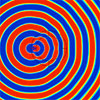Dec 22, 2021 (Nanowerk News) A major obstacle to widespread study and clinical use of 3D tissues is their short shelf-life, which may be anywhere from a just few hours to a few days. As in the case of an organ transplant, a bioprinted tissue must be transported rapidly to...
World’s smallest microelectronic catheter for minimally invasive surgery of the future
Dec 22, 2021 (Nanowerk News) A research team from Chemnitz University of Technology, IFW Dresden and Max Planck Institute CBG presents a completely new type of biomedical tool with a tiny biocompatible, microelectronic micro-catheter equipped with sensor and actuator functions (Science Advances, "Electronically integrated microcatheters based on self-assembling polymer films")....
Miniaturization of optical diffusers based on silicon nanoparticles
Dec 22, 2021 (Nanowerk News) Miniaturization of optical components is a challenge in photonics. Researchers of Karlsruhe Institute of Technology (KIT) and Friedrich Schiller University of Jena have now succeeded in developing a diffuser, a disk that scatters light, based on silicon nanoparticles. It can be used to specifically control...
From aptamer-graphene interaction understanding to biosensor performance improvements
Dec 22, 2021 (Nanowerk Spotlight) The use of graphene-based field-effect transistors in the past decade has been shown as one of the most powerful biosensing units for the detection of numerous biological and biochemical analytes. Distinctly specific electrical properties of graphene in the domain of field-effect transistors, along with high...
Machine learning models quantum devices
Dec 22, 2021 (Nanowerk News) Technologies that take advantage of novel quantum mechanical behaviors are likely to become commonplace in the near future. These may include devices that use quantum information as input and output data, which require careful verification due to inherent uncertainties. The verification is more challenging if...
Engineers test an idea for a new hovering rover
Dec 21, 2021 (Nanowerk News) Aerospace engineers at MIT are testing a new concept for a hovering rover that levitates by harnessing the moon’s natural charge. Because they lack an atmosphere, the moon and other airless bodies such as asteroids can build up an electric field through direct exposure to...
Biosensors using carbon nanotube field-effect transistors show great promise
Dec 21, 2021 (Nanowerk News) Demand for sensitive and selective electronic biosensors -- analytical devices that monitor a target of interest in real time -- is growing for a wide range of applications. They are ideal for health care within clinical settings, drug discovery, food safety and quality control, and...
Robotic manipulators Inspired by nature (w/video)
Dec 21, 2021 (Nanowerk News) Traditional robots can have difficulty grasping and manipulating soft objects if their manipulators are not flexible in the way elephant trunks, octopus tentacles, or human fingers can be. In Applied Physics Reviews ("Modeling and inverse design of bio-inspired multi-segment pneu-net soft manipulators for 3D trajectory...
Birds’ dazzling iridescence tied to nanoscale tweak of feather structure
Dec 21, 2021 (Nanowerk News) The iridescent shimmer that makes birds such as peacocks and hummingbirds so striking is rooted in a natural nanostructure so complex that people are only just beginning to replicate it technologically. The secret to how birds produce these brilliant colors lies in a key feature...
Creating invisibility with superconducting materials
Dec 21, 2021 (Nanowerk News) Invisibility devices may soon no longer be the stuff of science fiction. A new study published in Nanophotonics ("Invisibility concentrator based on van der Waals semiconductor α-MoO3") by lead authors Huanyang Chen at Xiamen University, China, and Qiaoliang Bao, suggests the use of the material...










